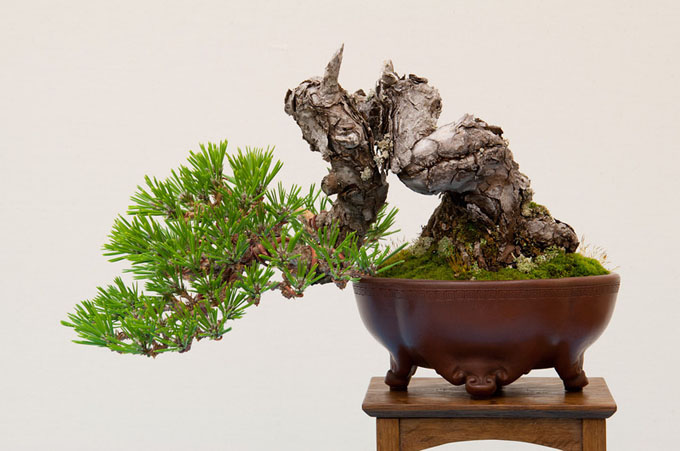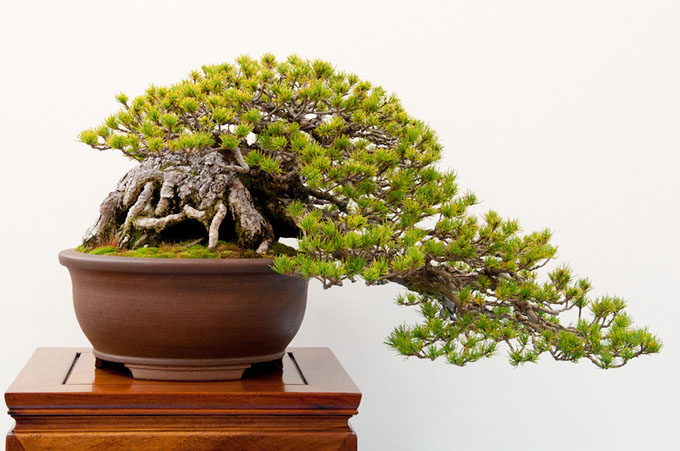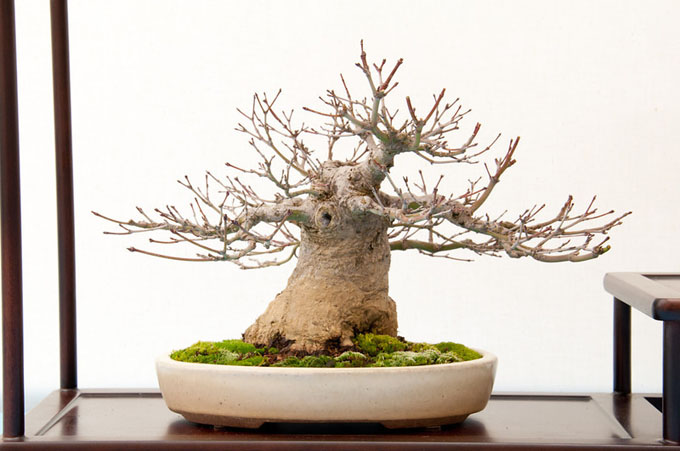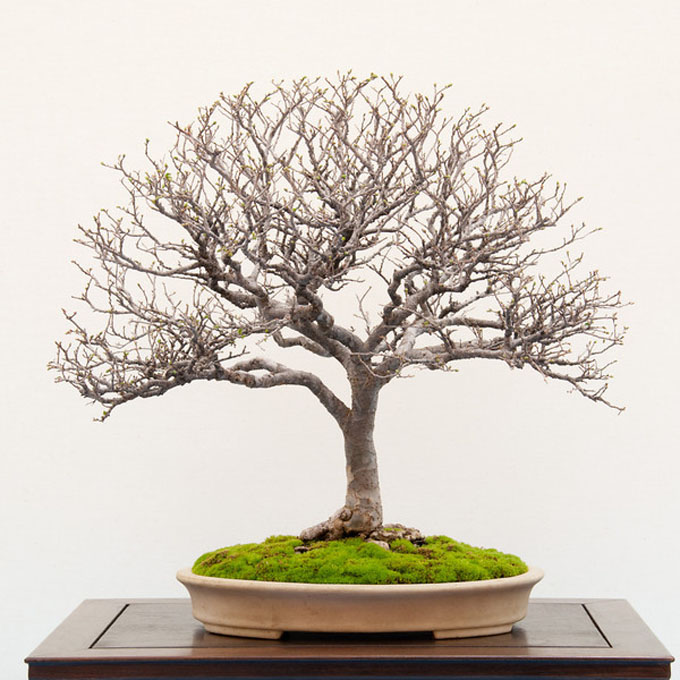 I wonder where this little Japanese black pine came from originally. My guess is that it was imported from Japan. I’ll also guess that, though it looks like a Yamadori (collected from the wild), it was actually grown for bonsai. I could be wrong on both counts, but there’s one count I’m pretty sure of; this is an excellent little tree, with it’s strong base, aged bark, compact twisted shape, small bright needles and complimentary pot.
I wonder where this little Japanese black pine came from originally. My guess is that it was imported from Japan. I’ll also guess that, though it looks like a Yamadori (collected from the wild), it was actually grown for bonsai. I could be wrong on both counts, but there’s one count I’m pretty sure of; this is an excellent little tree, with it’s strong base, aged bark, compact twisted shape, small bright needles and complimentary pot.
BIB then BABA
I should have posted BIB before BABA (see last post). Confused? Okay, here’s how it goes: There are two (at least) very notable Bonsai Clubs in the East Bay of the San Francisco Bay Area. One is the Bay Area Bonsai Associates (BABA) and the other is Bay Island Bonsai (BIB). Last post we featured BABA’s 30th Anniversary Exhibit at the Lake Merritt Garden Center in Oakland. This post we are featuring BIB’s 13th annual exhibit, also at the Lake Merritt Garden Center, even though the BIB exhibit was actually before the BABA exhibit (Still confused? Don’t worry, you can always just enjoy the great photos).
The same trusty camera and excellent eye
The photos in this post and our previous post (as well as a couple dozen older posts) are by Jonas Dupuich of Bonsai Tonight.
 Round and round and round. Round pot, round mounded trunk and rounded crown. Old too. It’s a Japanese white pine. The pot is by Michael Hagedorn. BTW: speaking of Japanese black and white pines, did you know we have an excellent book on just that topic?
Round and round and round. Round pot, round mounded trunk and rounded crown. Old too. It’s a Japanese white pine. The pot is by Michael Hagedorn. BTW: speaking of Japanese black and white pines, did you know we have an excellent book on just that topic?
�
 Have you ever seen such a stumpy Japanese maple? I’ve seen ones with heavier trunks, but don’t think I’ve seen many this compact and heavy. It’s a shohin (you can tell by the stand, among other things).
Have you ever seen such a stumpy Japanese maple? I’ve seen ones with heavier trunks, but don’t think I’ve seen many this compact and heavy. It’s a shohin (you can tell by the stand, among other things).
 This delicate Catlin elm (Ulmus parviflora, Catlin) shows some pretty good ramification (see our previous post for more on the topic). I’ve always had a soft spot for Catlins; they make for sweet little bonsai with their small leaves and lovely lines.
This delicate Catlin elm (Ulmus parviflora, Catlin) shows some pretty good ramification (see our previous post for more on the topic). I’ve always had a soft spot for Catlins; they make for sweet little bonsai with their small leaves and lovely lines.
�
Source: Bonsai Bark
0 comments:
Post a Comment